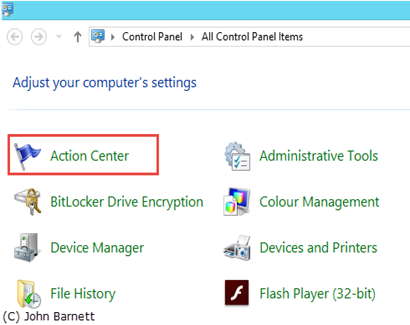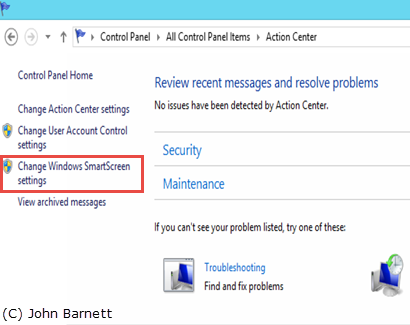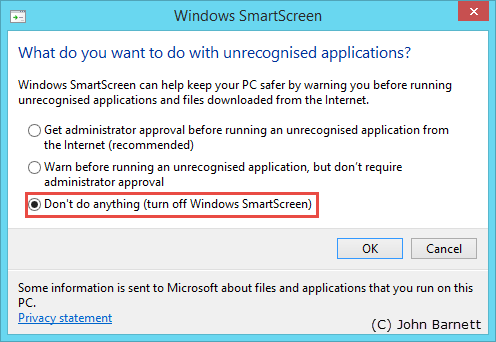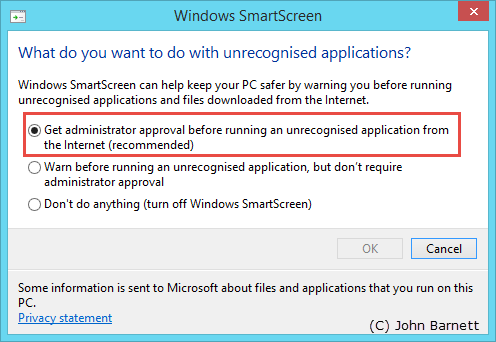As early as Internet Explorer 8 Microsoft
incorporated a SmartScreen filter which effectively
screened out any malicious files or content
downloaded by the Internet Explorer browser.
The SmartScreen Filter is actually a useful
addition to the Windows users' arsenal in the fight
against malicious downloads and, therefore, as such,
is better not disabled.
While the SmartScreen Filter will give the user
the option to download the malicious content if
he/she so wishes, many people find the SmartScreen
filter intrusive and prefer to have it disabled.
It should be noted that Microsoft recommend that
the SmartScreen Filter is always enabled for your
own piece of mind and safety. However, if you feel
the need to disable this feature of Internet
Explorer you can do so by following the steps below.
- Right Click on the Windows Logo
and from the menu that appears, click on
Control Panel.
- In Control Panel, click on
the Activity Center icon.

Fig 8.32.1 Click on the
Activity Center icon
- In the Activity Center
window look on the left hand side of the window
and you should see an option marked
Change Windows SmartScreen settings. Click
on this option.

Fig: 8.32.2 Click on the
Change Windows SmartScreen settings option
- A Windows SmartScreen box will now appear.
This asks: What do you want to do with
unrecognised applications?
- Click on the radio button
next to the option marked Don't do
anything (turn off Windows Smartscreen).

Fig: 8.32.3 Click the radio
button next to the Don't do anything option
- Finally, click the OK
button.
- Windows SmartScreen has now
been disabled.
- To re-enable SmartScreen
follow steps 1 to 9 but this
time click on the radio button
next to the option marked Get
administrator approval before running an
unrecognised application from the internet
(recommended).

Fig: 8.32.4 Click the radio
button next to the Get administrator approval